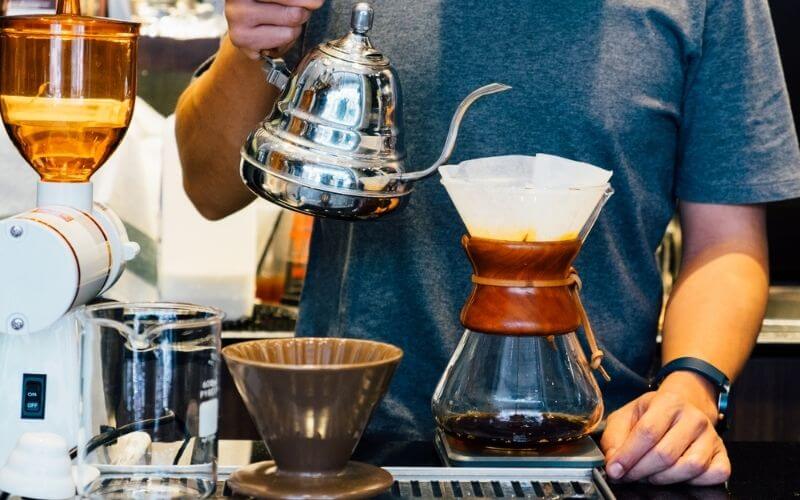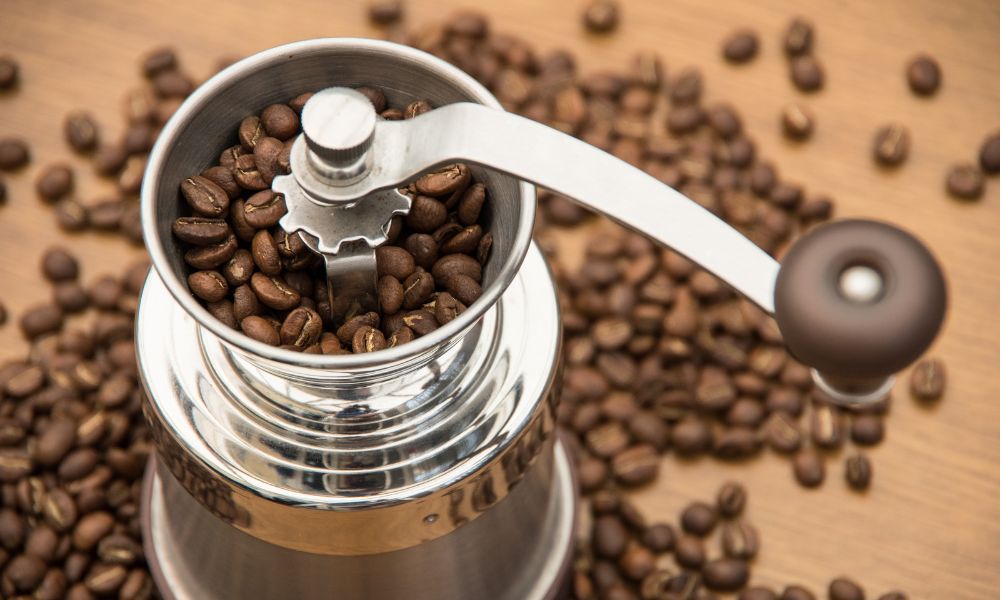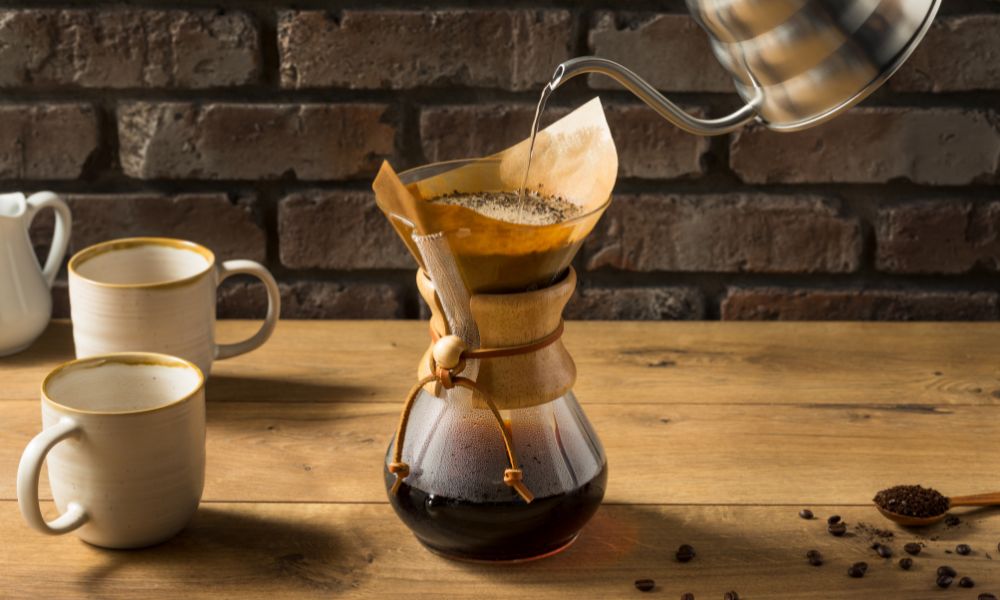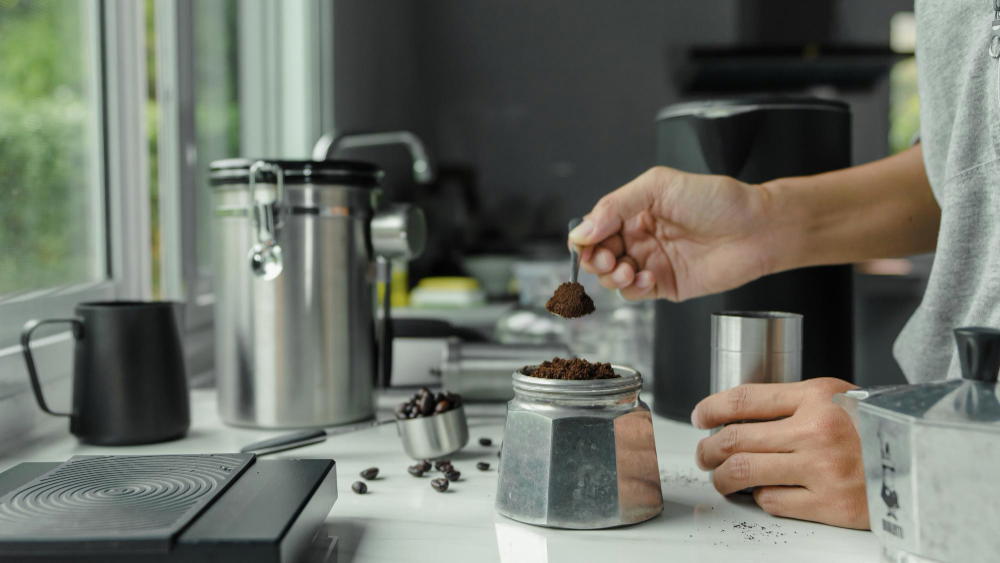Master pour-over coffee with the universally recommended 1:15 ratio – perfect for beginners seeking a balanced, flavorful brew. Simple, effective, and a great starting point for coffee enthusiasts!

Coffee to Water Ratio: The Golden Rule
The coffee to water ratio is fundamental in brewing a memorable cup of pour-over coffee. It guides the strength and flavor intensity of your brew. The commonly recommended ratio is 1:15—1 gram of coffee for every 15 grams (or milliliters) of water. This serves as a starting point; from here, you can fine-tune the ratio to your liking, whether it’s a stronger or more mellow cup you desire.
It’s not just about measuring, but understanding the relationship between water and coffee—much like a chef balances salt with acidity in a dish for the right seasoning level. This equation of coffee to water is what dictates the brewing magic that unfolds within the pour-over process.
Taste Test: Adjusting Brew Strength
The beauty of pour-over coffee lies in its adaptability to anyone’s taste. After the initial brew with the 1:15 coffee to water ratio, conduct your taste test. Is your coffee too bold? Increase the water. Is it too weak? Use less water or more grounds on your next brew. This adjustment process is not unlike altering seasoning in cooking until the flavor is just right.
| Desired Strength | Coffee | Water | Adjustment |
|---|---|---|---|
| Stronger | 20g | 300g | Increase coffee by 2g |
| Weaker | 18g | 300g | Decrease coffee by 2g |
A discerning palate will inform you best, so trust your senses and make adjustments accordingly.
Water Quality: A Key Ingredient
When crafting a refined coffee experience, we must consider water—not just as a solvent but as a critical ingredient harboring minerals that interact with coffee on a chemical compound and bond level. Water quality can elevate or mute the intricate flavor notes. Soft water can extract a flat cup, while hard water, rich in minerals, can enhance certain flavors but might also bring undesired heaviness.
Pour Over Essentials: Tools & Tips
Before delving into the meticulous art of a pour-over brew, it’s crucial to arm yourself with the tools necessary for this precision-driven process. The essential equipment lineup includes a pour-over coffee maker—like the popular HARIO V60 or Chemex coffee maker—a gooseneck kettle for controlled water flow, coffee filters, a scale, and a coffee grinder.
I would also recommend using your coffee makers’ respective filters for best results:
For those embarking on this journey, remember to start simple: use fresh coffee beans and pre-wet your filter to get rid of any papery residues and preheat the brewing vessel. Evenly saturating your grounds for a balanced extraction is a top tip to redistribute any coffee that’s clinging to the sides of the filter. And when it comes to water, aim for a temperature between 195°F to 205°F for an optimum brew.
Grind Size Mastery for Optimal Flavor

The grind size significantly impacts the flavor of your pour-over coffee. A grind that’s too coarse will under-extract, leading to a brew that’s weak and sour. Conversely, a grind that’s too fine can result in over-extraction, making your coffee bitter and astringent. Achieving a medium grind, akin to sea salt in texture, is a solid guideline for hitting that sweet spot. Adjust according to your taste test results, allowing for a full expression of the coffee’s flavor profile.
Experimentation is key—similar to our approach at Boat Basin Cafe where we adjusted the grind to capture the essence of a single-origin bean or blend perfectly.
The Art of the Pour: Techniques Defined

Beyond just depth of flavor and strength, the pour in pour-over coffee is a defining step that requires precision and patience. One must master a consistent, slow, and spiral pouring motion—starting from the center and moving outward. This ensures an even soak, which in turn promotes a balanced extraction of flavor. The first pour, known as the “bloom,” allows the coffee to release any gas, expand, and prepare for the full brew—usually lasting 30 seconds and using just enough water to wet the grounds.
For an impeccable pour, maintain control of your kettle and aim for a steady, gentle flow rate. The Fellow or any gooseneck kettle facilitates these movements, granting the brewer finesse and precision akin to a chef gracefully managing the heat under a pan.
At Boat Basin Cafe, we found the best results with filtered water that was neither too hard nor too soft. Striking a balance ensures that the chemical makeup doesn’t overshadow the coffee‘s natural profile but instead extracts a harmonious cup.
Maintenance: Ensuring Consistency

Maintain your pour-over apparatus with the same care bestowed upon cherished culinary tools. Routine rinsing of your Chemex or HARIO coffee makers after each use is crucial, and occasional deep cleaning to remove any residual oils is beneficial.
Grinders, often overlooked, should be cleaned regularly to ensure that each batch of coffee grounds is as fresh as the last. Clean kettles and scales to keep your brewing process hygienic and precise. Consistency is the hallmark of a skilled brewer, much like a seasoned chef’s consistent heat on the stove.
Pour Over Perfection: A Home Brewer’s Diary
Capturing the nuances of each brew can help refine your pour-over technique and consistency. Start a brewing diary to log variables such as the coffee to water ratio, grind size, water temperature, and pouring style. This habit can be especially insightful when experimenting with different coffee beans and ratios. Much like a chef tests recipes, noting variations can lead you to your personal standard for pour-over perfection.
Recording your observations and results transforms the process into an enlightening ritual fostering a deeper connection with the craft. Over time, you will accumulate a wealth of knowledge that can be used to replicate that perfect cup or continue exploring new territories within the realm of coffee brewing.
☕️ Pour Over vs French Press: Which One’s Your Favorite? Read more here.
FAQs
When immersing oneself in the ritual of pour-over brewing, questions naturally arise. To assist in your coffee-making journey, here are answers to some frequently asked queries.
Is pour over coffee better than a French press?
Whether pour-over coffee is better than French press is a matter of personal preference. Pour-over typically yields a cleaner cup with more pronounced flavors due to the filtering process which removes most of the coffee oils and fines. A French press allows more oils to remain in the coffee, resulting in a richer, fuller-bodied cup. The choice between the two depends on one’s taste and desired mouthfeel.
Why is my pour over coffee bitter?
Bitterness in pour-over coffee often stems from over-extraction. When water and coffee are in contact for too long, or the water flows through the grounds too slowly, it can extract the more bitter compounds. To combat this, ensure your grind is not too fine, as this slows the rate of water flow. Also, be mindful of pouring too much water or pouring too slowly. Adjusting these elements can help achieve a more balanced and less bitter cup.